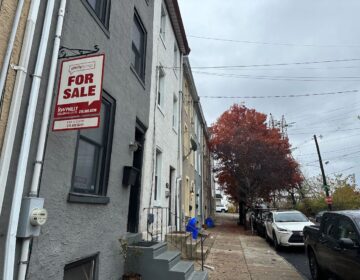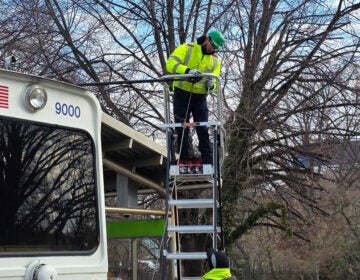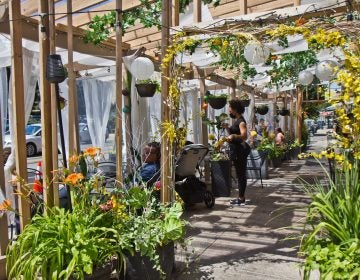Why plazas, parklets and people belong on Philly’s streets
Parking spaces are becoming parks in Philly. Drexel anthropologist Katrina Johnson-Zimmerman writes about how to bring these popular public amenities to more neighborhoods.
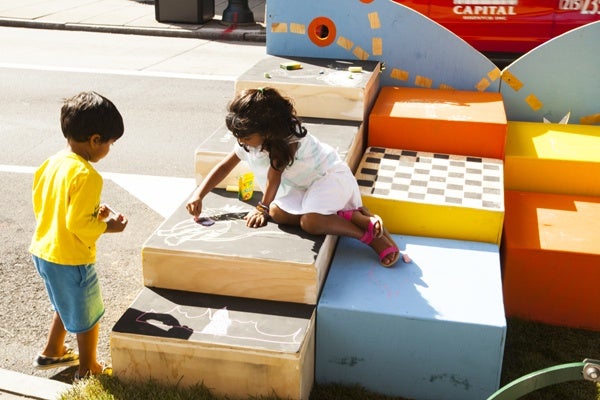
Children play on a Philadelphia parklet. (WHYY)
Walking around last Friday, you may have spotted some intriguing installations in what were otherwise regular old parking spaces. Once again, it was PARK(ing) Day in Philadelphia, one of my favorite days of the year: the day when our streets show their potential as the true public spaces they should be and are.
In Philadelphia, PARK(ing) Day parklets are incredibly abundant. This year, the Center for Architecture, which acts as a facilitator for PARK(ing) Day installations, recorded 47 temporary parklets in the city. 47!
It’s a remarkable feat, but what prevents our city from making the parklets and plazas seen on PARK(ing) Day permanent so we can enjoy these spaces every day?
One year and nearly 30 in-depth interviews with local participants and national experts later, researchers from Drexel’s Lindy Institute, including myself, have a few ideas.
Our report, Catalyzing Community Capacity: How Philadelphia Can Create Equitable Right-of-Way Stewardship, explains why some installations work, the “pain-points” preventing others from succeeding, and the models our city can learn from.
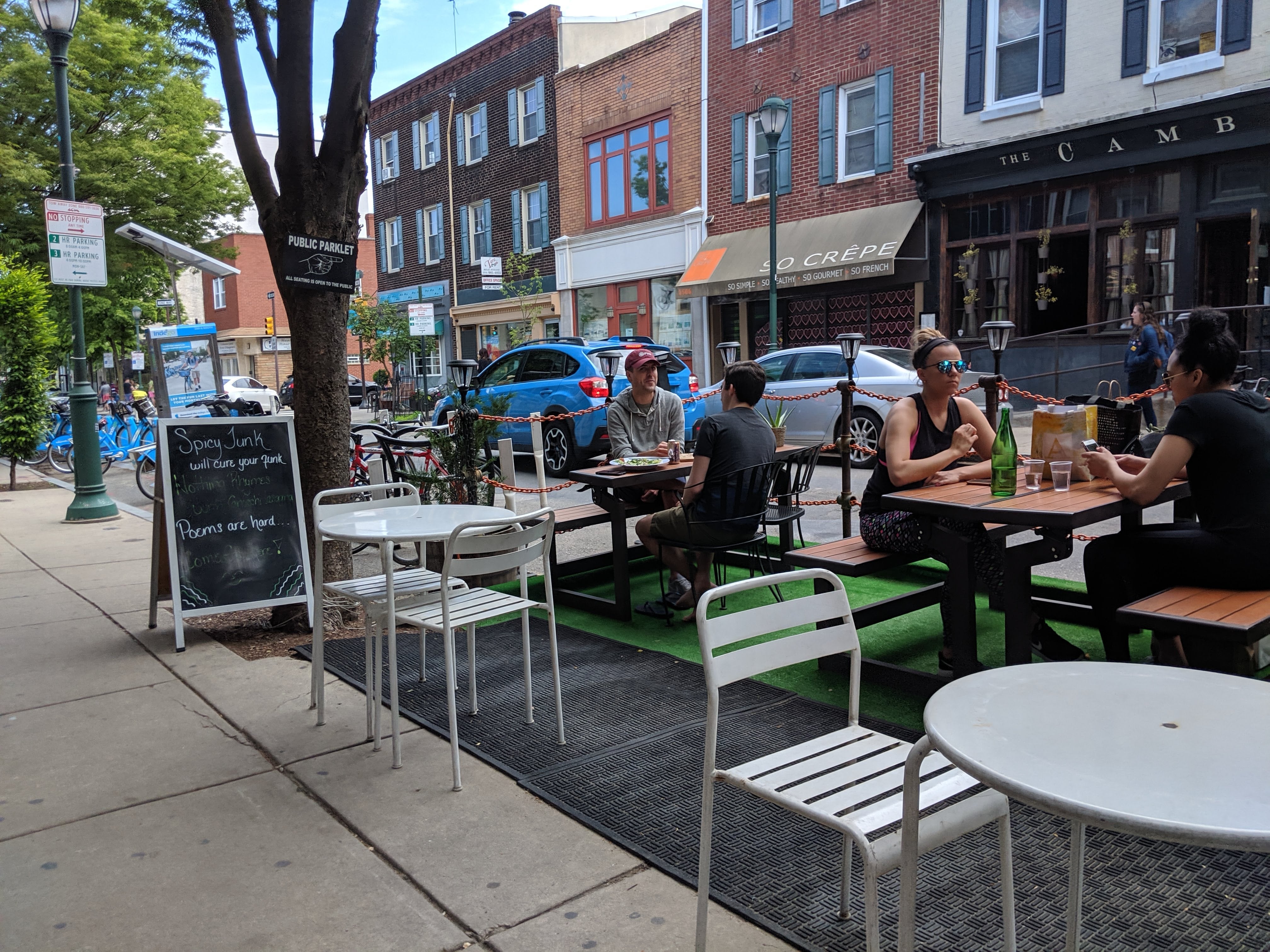
But first, why are these spaces so important?
Public space is crucial for our health and sense of belonging in urban environments. Parklets, pedestrian plazas, and bike corrals are relatively low-cost but can make a big difference in having places to meet, play, and support alternative modes like walking and biking. These spaces create a sense of place, make intersections more humane, and further Vision Zero goals of eliminating traffic deaths. And importantly, they hope to change the culture of the city by reminding us that streets are public spaces, and communities should be empowered to create and steward them to fit their needs, which may not be for parking cars, particularly as auto use is expected to change dramatically in the coming decades.
Yet one of our key findings is that Philly’s current system for creating these spaces has resulted in an inequitable landscape.
The distribution of parklets and pedestrian plazas, like the installations on PARK(ing) Day, are disproportionately concentrated in Center City and University City. Moreover, they are mostly created by district or neighborhood organizations that have the privilege of time, capital, and connections with which to successfully implement these projects.
Reducing this disparity will take concerted action and support, but we believe that with modest strategic investment in time and resources, the Kenney administration can catalyze latent capacity in neighborhoods across the city. Steps to this transform the street stewardship landscape include:
- Streamlining Right-of-Way permitting processes, including identifying primary points of city staff contact, consolidating responsibility for review and approval, the creation of a “kit of parts” and preapproved open-source designs, among other refinements.
- Creating ROW stewardship program guidebooks to improve usability, as has been effective in other cities.
- Increasing education and outreach guided by equity indicators, data-driven prioritization and data transparency. This will provide a foundation for incremental improvement to tailor and target information and services to meet equity goals.
- Building capacity within the city administration to support the ROW Stewardship Program through a dedicated staff member. Another key aspect to this is increasing ROW capacity through additional staffing overseen by senior-level staff leadership.
- Exploring the creation of a new ROW stewardship-focused organization dedicated to gathering and distributing resources to manage, promote, and process community requests in collaboration, not competition, with additional city staff.
For any of these recommendations to be successful requires city leadership that has a commitment to prioritizing community-created public space. This commitment should be matched with relatively modest capacity increases in staff and available resources to community groups. It is our belief that an increase in these humble amenities will have a catalytic effect both in the physical streetscape of the city’s neighborhoods but also in the mindset of how we relate to our public space.
These small but mighty amenities can lead to a sea-change for our streets: We will feel it when community stewardship of local streets is assumed rather than awarded, when we are free to bike down a car-free street without fear, and when our streets are seen as places for people more than parking. As the Center for Architecture observed, Philadelphia has over 10,000 acres of paved streets and nearly four parking spaces per household — plenty of room for this important permanent change. As one interview subject put it, “This is a city. It’s a community.” Here’s hoping we can come together to take an important next step for the streets that connect all of us within that community.
WHYY is your source for fact-based, in-depth journalism and information. As a nonprofit organization, we rely on financial support from readers like you. Please give today.





